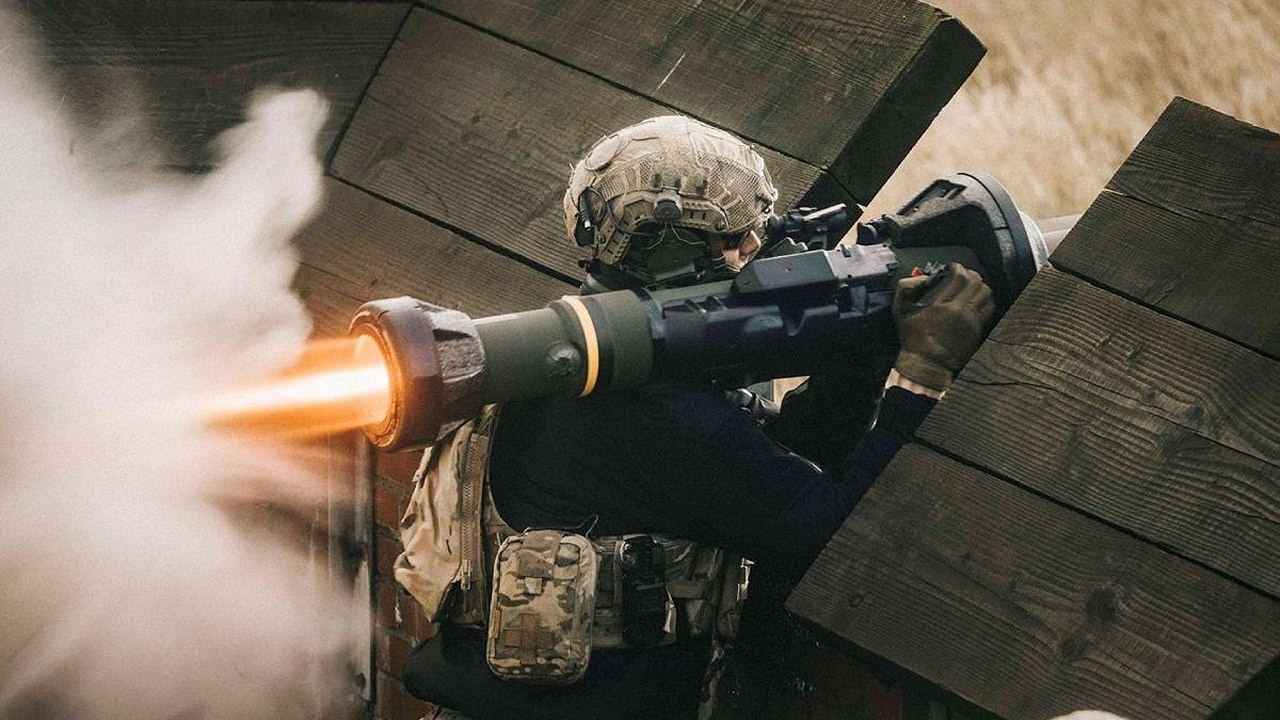NLAW: Britain and Sweden’s Anti-Tank Weapon – The Next generation Light Anti-tank Weapon, colloquially known by its acronym NLAW, is one of the West’s most common anti-tank weapons in service today. While the Javelin system has received much international attention for its role in practically halting Russia’s advance into Ukraine, the NLAW system has also been used to great success by Ukrainian forces.
NLAW: A Short History
NLAW was developed as a replacement for the older LAW-80 anti-tank missile system of late Cold War vintage.
As the LAW-80 began to be phased out, British defense officials sought to develop a replacement anti-tank system, specifically one which could defeat armor in close battle and to attack fortified bunkers.
After opening for competition, the Swedish defense firm Saab Bofors Dynamics received their contract, and ultimately made use of a variety of Western subcontractors such as Thales Air Defence, BAE Systems, NP Aerospace, FR HiTemp, and Skeldings, among others.
Production on the NLAW anti-tank missile system began in full in 2009, which is when the system was first delivered to customers.
Thales’ factory in Belfast, Northern Ireland, which also produces the Starstreak and LMM missile systems, has been the center of NLAW assembly.
Assembly of the NLAW is concentrated in the United Kingdom, while the development of the system is primarily in Sweden, as per the foundational memorandum of understanding signed by the United Kingdom and Sweden at the beginning of the system’s development.
In addition to the United Kingdom and Ukraine, the anti-tank missile system has also been adopted by Finland, Luxembourg, Sweden, Switzerland, Indonesia, and Malaysia.
NLAW: The Specs
The NLAW system itself weighs about 12.5 kilograms and has an effective combat range of 20 to 800 meters.
NLAW is a particularly effective weapon in relatively close combat, where its versatility and easy deployment makes it a nimble weapon for one-man crews, as demonstrated in Ukraine.
The missile is capable of making Overfly Top Attacks against armored targets and Direct Attacks against non-armored targets, which contributes to its variability in effective range.
NLAW does not rely on an active target seeking system to acquire targets, and instead uses “predicted line of sight” targeting.
By allowing the user to fire effectively after tracking the target for only a few seconds, the operator may remain mobile on the battlefield and does not need to maintain a visual lock for the system to work, and the disposable nature of NLAW also allows flexibility for infantry users.
The British Armed Forces describes the NLAW as being particularly valuable to light forces operating independently in built-up and open environments alike.
With a shelf life of 20 years, today’s NLAW will see service far into the future.
NLAW Heads to Ukraine
The system has been employed to great success by the Ukrainian armed forces on the battlefields of their country against Russia’s invasion force.
With 4,200 units reportedly sent to Ukraine since mid-March, the traditional battlefield dominance enjoyed by armored vehicles has been challenged by the wide distribution and employment of NLAW and other anti-tank systems.
This is a remarkable shift that allows even Ukrainian soldiers with minimal training to effectively wield a weapon which gives them a powerful battlefield advantage over armored opponents.
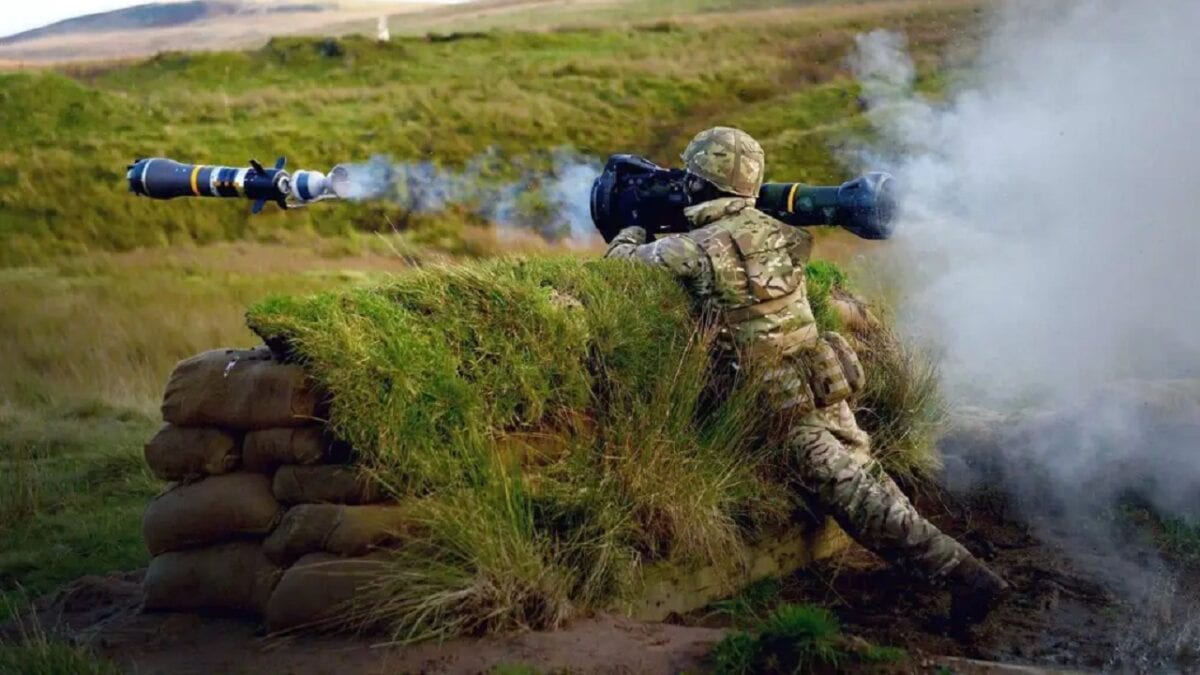
NLAW being fired. Image credit: UK Military/Creative Commons.
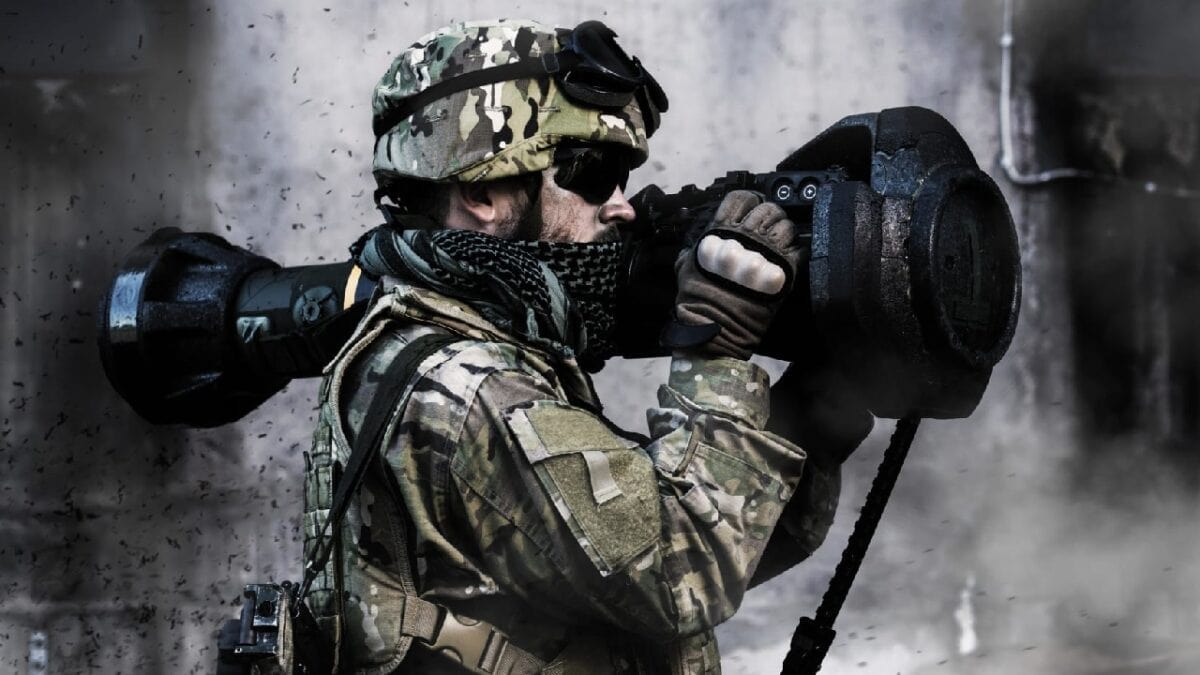
NLAW missile. Image Credit: Creative Commons.
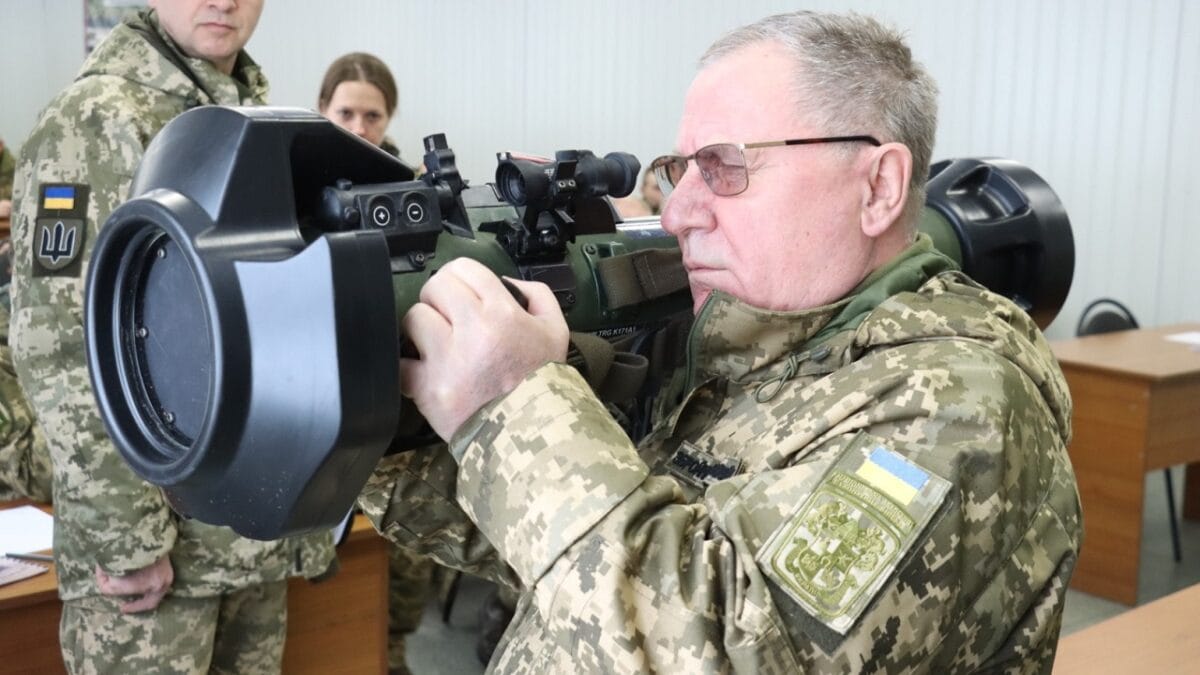
NLAW anti-tank missile in Ukraine. Image Credit: Ukrainian Military.
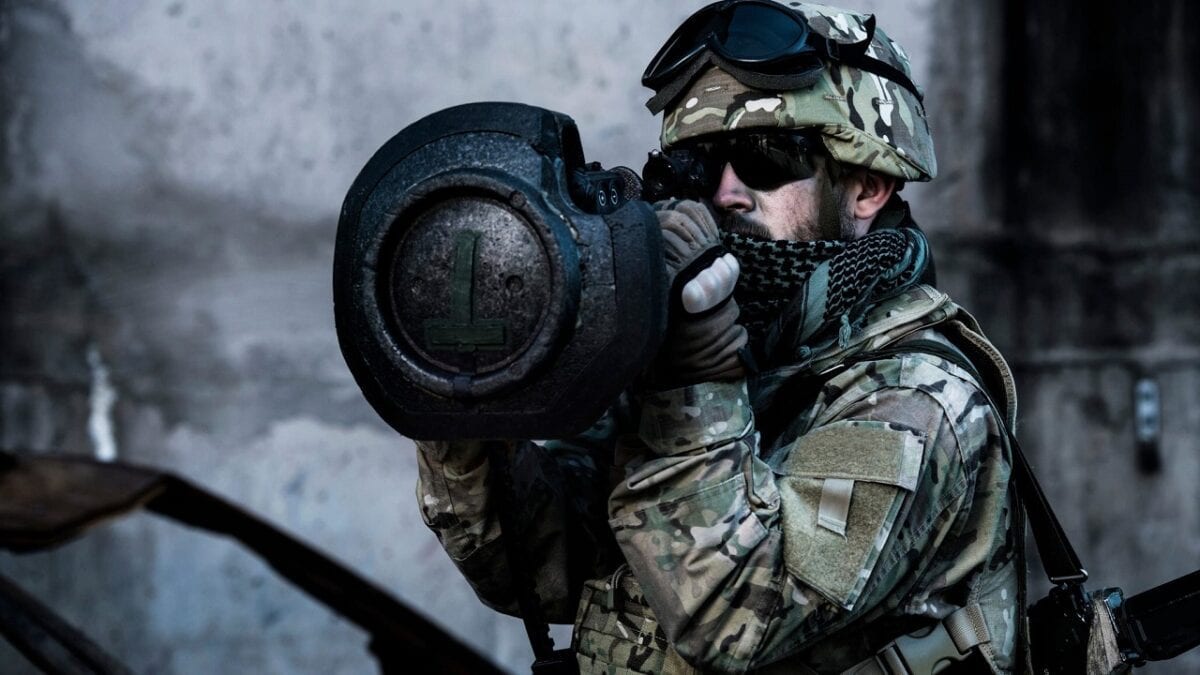
NLAW. Image Credit: SAAB.
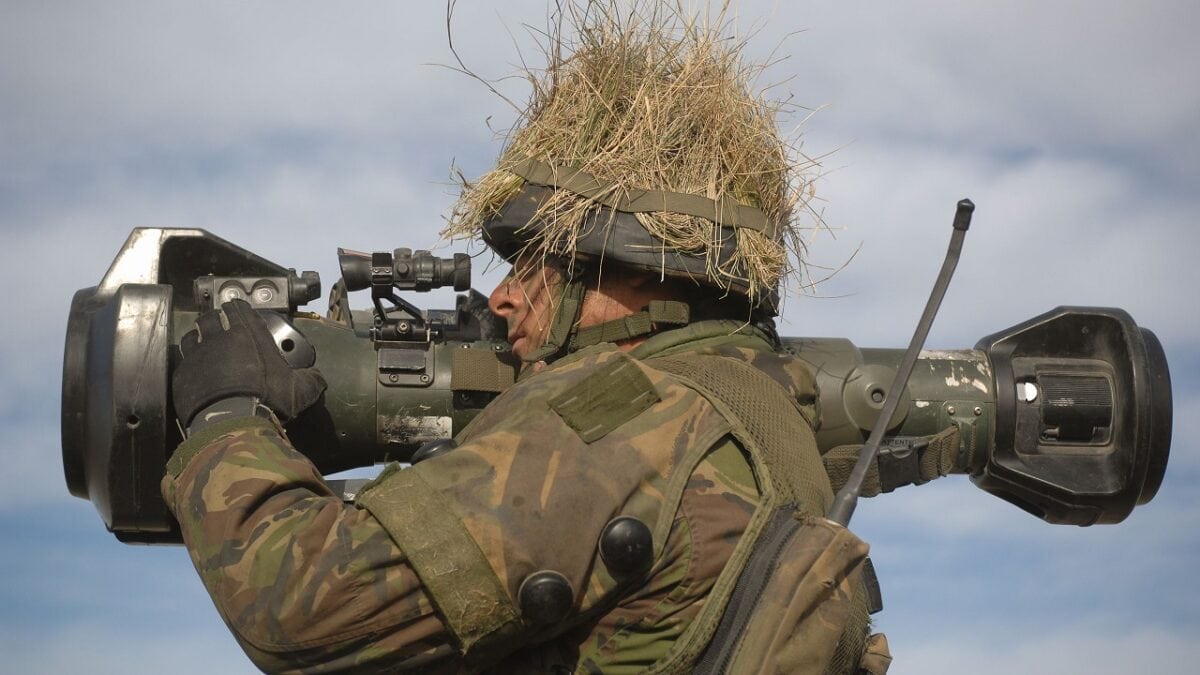
A soldier is pictured aiming a practice NLAW (Next Generation Light Anti-Tank Weapon). This training aid simulates the real NLAW launcher but fires a laser at armored vehicles equipped to receive the beam.
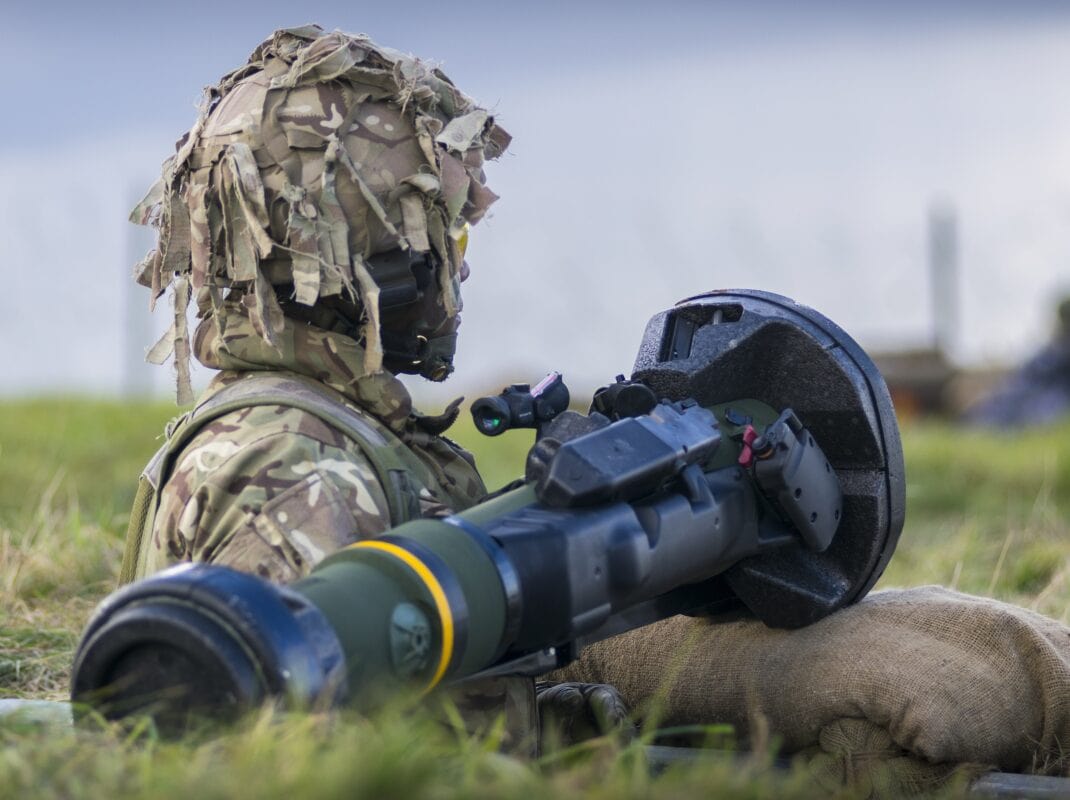
The natural mobility and utility of the system in shorter-range contexts makes this tank-killer particularly vulnerable in close-quarter battles and ambush scenarios.
While NLAW was far less tested in combat than the American Javelin at the start of Russia’s invasion of Ukraine in February 2022, its effective use by Ukrainian forces has proved the value of well-distributed and easy-to-use systems in the hands of a motivated force to halt a more armored force.
With that in mind, this missile likely will remain in use for the foreseeable future.
Wesley Culp is a Research Fellow at the Center for the Study of the Presidency and Congress. He regularly writes on Russian and Eurasian leadership and national security topics and has been published in The Hill and the Diplomatic Courier. He can be found on Twitter @WesleyJCulp.

